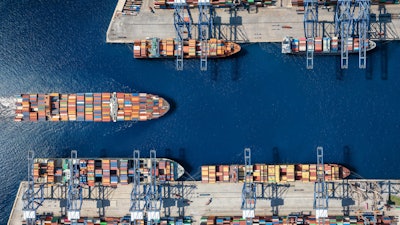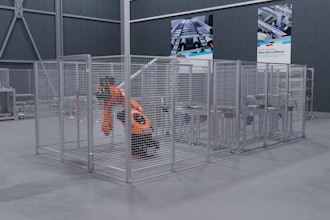
The distribution landscape has weathered countless storms over the past half-decade, yet the current era of trade policy upheaval presents challenges unlike any we've encountered.
Rising protective tariffs and escalating trade tensions have created a domino effect across global markets, with nations implementing retaliatory measures that further complicate international business.
Against this backdrop, distributors and wholesalers find themselves operating in an environment where yesterday's pricing strategy may be obsolete by tomorrow.
A new era of pricing pressure
The impact of shifting trade policies extends far beyond Washington headlines. Recent developments, including the introduction of a universal 10% baseline tariff in the U.S. alongside steeper levies on certain industries and regions, signal a fundamental shift in how businesses approach international sourcing and pricing. The new wave of tariffs represents huge changes that can materialize with little warning, forcing immediate recalibration of cost structures and competitive positioning.
The ripple effects touch every corner of the distribution ecosystem. Steel and aluminium distributors have already experienced this firsthand, with tariffs swinging from 25% to zero and back again. Automotive parts suppliers face similar uncertainty, with tariffs threatening to reshape entire supply chains. The challenge for distribution companies isn't just absorbing these costs – it's maintaining competitiveness while preserving the margins that keep businesses viable.
Currency fluctuations compound these pressures, creating a double-edged sword where favorable exchange rates can be instantly cancelled out by tariff adjustments. At the same time, regional market dynamics add another layer of complexity, as domestic suppliers suddenly gain cost advantages that can fundamentally change the competitive landscape overnight.
Beyond reactive measures
Traditional pricing approaches are proving inadequate for today's trade environment. The old playbook of annual price reviews and quarterly adjustments simply cannot keep pace with policies that change monthly or even weekly.
Recent trade policy shifts offer evidence of how quickly uncertainty can translate into real costs. For example, Trade Policy Uncertainty (TPU) caused by Brexit led to UK import prices increasing by up to 10%. This pattern demonstrates how just the possibility of trade disruption ripples through supply chains, influencing pricing decisions and inventory strategies across entire industries long before any official policy takes effect.
As industries remain sensitive to change, businesses cannot afford to wait for policy certainty that may never come. Instead, by building pricing frameworks capable of rapid response, they can maintain and protect margins across diverse markets and product lines.
Slow to act, quick to lose
The penalty for sluggish response to trade policy shifts extends well beyond immediate margin pressure. Distributors locked into inflexible pricing systems face a range of competitive disadvantages that build over time.
Manual pricing processes remain surprisingly common in the distribution sector, creating a dangerous lag between market changes and pricing adjustments. While competitors with automated systems pivot within seconds, companies dependent on spreadsheets and manual calculations find themselves weeks behind. This leaves them watching market share evaporate as customers opt for more affordable suppliers or struggling against margin erosion after failing to raise prices quickly enough.
This technological gap becomes particularly pronounced during periods of rapid change. When tariffs shift or supply chain disruptions occur, the ability to immediately assess impact and adjust pricing across thousands of SKUs and multiple markets becomes a critical competitive advantage.
Digital transformation in distribution
The distribution industry's comparatively slow approach to digital transformation is becoming a real risk in today's volatile trade environment. However, this challenge also presents an opportunity for companies to win back margins through strategic technology adoption.
Intelligent and automated pricing solutions enable distributors to respond to tariff changes with unprecedented speed and precision. When new trade policies emerge, these systems can instantly adjust prices to maintain target margins while accounting for local market conditions. Perhaps most importantly, these solutions provide the visibility needed to monitor pricing across regions and product lines, ensuring that rapid adjustments align with broader business objectives.
Building resilience for an uncertain future
As trade policies continue evolving, the ability to adapt quickly will increasingly separate market leaders from followers. The companies that thrive will be those that view pricing not as a periodic exercise but as a dynamic capability requiring continuous attention and sophisticated tools.
The investment in pricing technology and processes pays dividends beyond immediate crisis response, and companies with agile pricing capabilities will find themselves better positioned to capitalize on market opportunities.
Steve Peppler is the vice president, product and business transformation at Flintfox by Enable.






















